Loophole Games
by Smarak SwainGeneral Contents
| Preface | v |
| About the Author | vii |
| Detailed Contents | xi |
| Introduction: “Don’t be Evil� | 1 |
Part I: Profit Suppression
| 1. Deferral of Revenue | 13 |
| 2. Exploiting the Mercantile System of Accounting | 20 |
| 3. Manipulating Segmental Accounts | 28 |
| 4. SPV and JDA Structures | 35 |
| 5. Characterisation of Revenue as Capital Receipt | 45 |
| 6. Rate Arbitrage | 51 |
Part II: Gain Suppression
| 7. Avoiding Tax through Capital Receipts | 63 |
| 8. Capital Loss Harvesting | 75 |
| 9. Structuring through Non-compete Fees | 81 |
| 10. Bonus Stripping | 89 |
Part III: Profit Shifting
| 11. Intra-Group Services | 97 |
| 12. Thin Capitalisation | 108 |
| 13. IP Migration Strategies | 115 |
| 14. Cost Sharing Arrangements Used for Tax Avoidance | 127 |
| 15. Restructuring into a Contract Manufacturer | 133 |
| 16. Structuring of Sourcing and Procurement Activities | 145 |
| 17. The Dummy’s Guide to Structuring | 153 |
Part IV: Base Erosion
| 18. Permanent Establishment Manipulations | 167 |
| 19. Taxing the Cloud | 179 |
| 20. Structuring of OTT Business | 188 |
| 21. Circumventing the Equalisation Levy | 194 |
| 22. Migrating HNWIs and Professionals | 206 |
Part V: Sham Transactions
| 23. Use of Third Party Intermediaries | 217 |
| 24. Colouring Loans as Finance Lease | 224 |
| 25. Employer-Employee Collusion | 235 |
| 26. Tax Avoidance through Merger & Acquisition | 243 |
| 27. Saving on Dividend Tax | 256 |
| 28. More sham characterisations | 269 |
Part VI: Trends in Blatant Evasion
| 29. Shell Companies | 279 |
| 30. Tax Evasion through Stock Exchanges | 294 |
| 31. Under-Invoicing and Over-Invoicing | 308 |
| 32. Hawala | 318 |
| 33. Tax Havens | 349 |
| 34. Exchange of tax information | 366 |
Detailed Contents
| Preface | v |
| About the Author | vii |
| General Contents | xi |
| Introduction: “Don’t be Evil� |
Part I: Profit Suppression
| 1. Deferral of Revenue | � |
|
14 |
|
15 |
|
18 |
| 2. Exploiting the Mercantile System of Accounting | 20 |
|
20 |
|
21 |
|
22 |
|
23 |
|
24 |
|
25 |
|
26 |
| 3. Manipulating Segmental Accounts | 28 |
|
29 |
|
31 |
|
34 |
| 4. SPV and JDA Structures | 35 |
|
35 |
|
36 |
|
37 |
|
38 |
|
40 |
|
42 |
|
44 |
| 5. Characterisation of Revenue as Capital Receipt | 45 |
|
47 |
|
48 |
|
48 |
|
50 |
| 6. Rate Arbitrage | 51 |
|
51 |
|
54 |
|
55 |
|
56 |
|
57 |
|
59 |
Part II: Gain Suppression
| 7. Avoiding Tax through Capital Receipts | 63 |
|
64 |
|
64 |
|
65 |
|
71 |
|
73 |
|
75 |
| 8. Capital Loss Harvesting | 75 |
|
76 |
|
78 |
|
79 |
|
80 |
|
81 |
| 9. Structuring through Non-compete Fees | 81 |
|
83 |
|
86 |
| 10. Bonus Stripping | 89 |
|
91 |
|
91 |
Part III: Profit Shifting
| 11. Intra-Group Services | 97 |
|
98 |
|
102 |
|
103 |
|
105 |
| 12. Thin Capitalisation | 108 |
|
108 |
|
109 |
|
110 |
|
110 |
|
113 |
| 13. IP Migration Strategies | 115 |
|
115 |
|
117 |
|
118 |
|
119 |
|
120 |
|
120 |
|
122 |
|
123 |
|
125 |
|
126 |
| 14. Cost Sharing Arrangements Used for Tax Avoidance | 127 |
|
129 |
|
129 |
|
130 |
| 15. Restructuring into a Contract Manufacturer | 133 |
|
136 |
|
137 |
|
139 |
|
140 |
|
140 |
| 16. Structuring of Sourcing and Procurement Activities | 145 |
|
146 |
|
150 |
|
152 |
| 17. The Dummy’s Guide to Structuring | 153 |
|
153 |
|
155 |
|
157 |
|
157 |
|
159 |
|
161 |
Part IV: Base Erosion
| 18. Permanent Establishment Manipulations | 167 |
|
169 |
|
171 |
|
173 |
|
174 |
|
175 |
| 19. Taxing the Cloud | 179 |
|
180 |
|
183 |
|
184 |
|
185 |
| 20. Structuring of OTT Business | 188 |
|
190 |
|
191 |
| 21. Circumventing the Equalisation Levy | 194 |
|
195 |
|
197 |
|
199 |
|
201 |
|
202 |
|
204 |
|
205 |
| 22. Migrating HNWIs and Professionals | 206 |
|
206 |
|
210 |
|
213 |
Part V: Sham Transactions
| 23. Use of Third Party Intermediaries | 217 |
|
|
|
221 |
|
|
| 24. Colouring Loans as Finance Lease | 224 |
|
224 |
|
226 |
|
227 |
|
229 |
|
232 |
|
233 |
| 25. Employer-Employee Collusion | 235 |
|
235 |
|
236 |
|
237 |
|
237 |
|
238 |
|
239 |
|
242 |
| 26. Tax Avoidance through Merger & Acquisition | 243 |
|
243 |
|
246 |
|
247 |
|
248 |
|
251 |
|
253 |
| 27. Saving on Dividend Tax | 256 |
|
258 |
|
259 |
|
261 |
|
261 |
|
263 |
|
265 |
|
266 |
|
267 |
|
269 |
| 28. More sham characterisations | 269 |
|
271 |
|
272 |
|
273 |
Part VI: Trends in Blatant Evasion
| 29. Shell Companies | 279 |
|
280 |
|
280 |
|
282 |
|
282 |
|
283 |
|
283 |
|
289 |
|
292 |
| 30. Tax Evasion through Stock Exchanges | 294 |
|
295 |
|
298 |
|
299 |
|
300 |
|
301 |
|
304 |
| 31. Under-Invoicing and Over-Invoicing | 308 |
|
311 |
|
314 |
|
316 |
| 32. Hawala | 318 |
|
320 |
|
329 |
|
333 |
|
337 |
|
340 |
|
341 |
|
343 |
|
344 |
|
345 |
|
346 |
| 33. Tax Havens | 349 |
|
349 |
|
|
|
|
|
|
|
|
|
|
|
359 |
|
363 |
| 34. Exchange of tax information | 366 |
|
368 |
|
369 |
|
370 |
About the Author
Have Questions About This Book?
Our course advisors are here to help you make the right decision for your career growth.
Other books
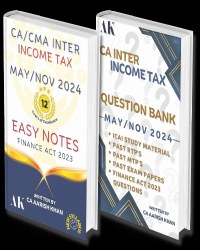
CA/CMA INTER COMBO - COLOURED EASY NOTES + QUESTION BANK
CA Aarish Khan
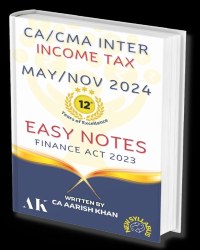
CA/CMA INTER EASY NOTES COLOURED
CA Aarish Khan
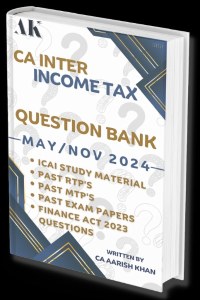
CA/CMA INTER INCOME TAX QUESTION BANK
CA Aarish Khan

GST (IDT) Book - 4th Edition | May, Sept 2026 & Jan 2027 Attempt
CA Arpita Tulsyan
Join Us !!
List your Books
Share your knowledge and help shape the next generation of tech-savvy CA & Tax professionals while building a rewarding career in education.
Get Started

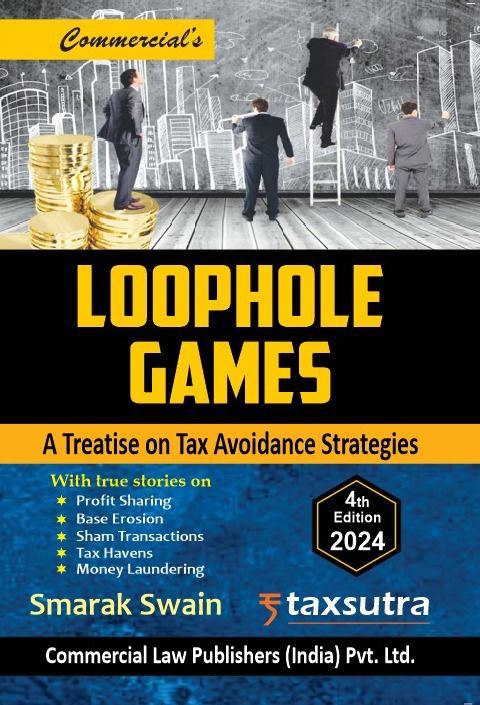
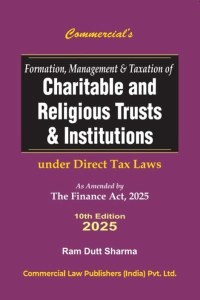
 CAclubindia
CAclubindia
